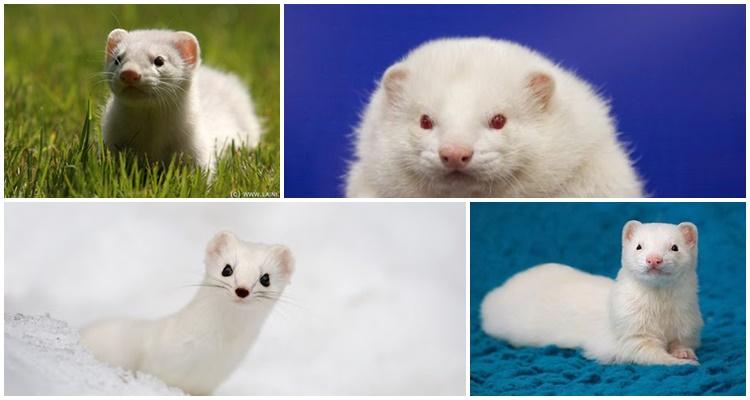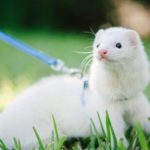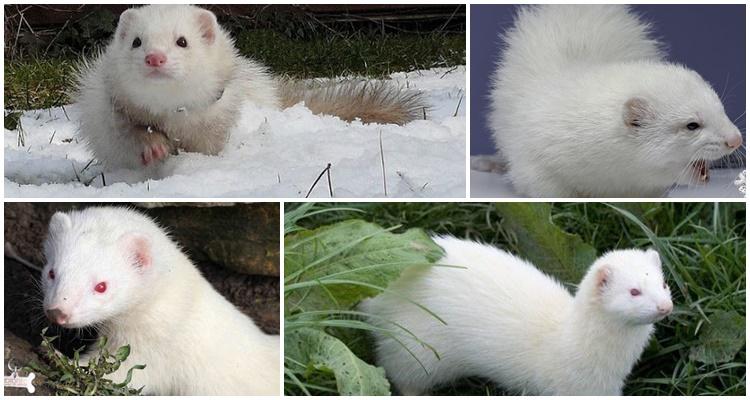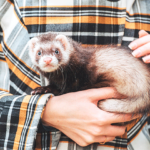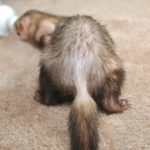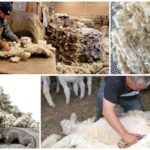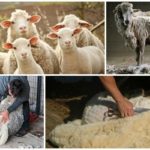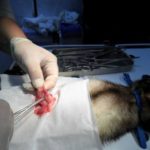The fur of regular pet ferrets is colored in different shades of brown. The color of white ferrets is completely white, without markings. Such animals are considered albinos. Let's consider the advantages and disadvantages of animals, the rules of keeping and caring for them at home, how to arrange a home, what to feed, how to treat and prevent diseases.
Features of white ferrets
White ferrets come in two colors: sable and albino. Regardless of what coat color the adult animal has, puppies are born white. Then, after 2-3 weeks of life, some have a darker tail and paws, a muzzle, and the undercoat acquires a yellowish-gray tint.
Albinos have no change in fur color; they can be identified by their red eyes, a characteristic feature of albinos. Not only real but also partial albinos are born in the population; they have dark eyes.
Advantages and disadvantages
Livestock breeders note the following advantages of white ferrets:
- original color;
- They do not require special care and eat standard food.
Disadvantages of white ferrets:
- poorer health than colored individuals;
- the offspring of albinos can be colored, since the gene responsible for the absence of pigment in the coat is recessive.
It is precisely because of the unusual coloring of white ferrets that livestock breeders are happy to breed them at home as pets. With good care, animals can live 5-7 years.
Maintenance and care
The general rules for keeping white ferrets are similar to those for animals with dark fur. For a pet, you need to prepare a place where it will live, calculate and prepare a diet, and care for the animal.
Housing
The ferret gets used to people quickly; it is a quick-witted and intelligent animal that quickly learns everything it needs. But with other pets there may be problems. Ferrets are predators and will hunt guinea pigs, poultry and reptiles. Therefore, animals of these species can only be kept separately, in different rooms. Ferrets are friends with cats, you can keep them with dogs, but not of the hunting breed.
You need to buy a cage for your ferret. with metal bars, in which he will feed and sleep. The cage should not be small; ferrets are active animals and do not like cramped spaces. You can’t keep an animal in a cage all the time; you need to let it out to walk around the room every day.
There should be a place in the cage where to put a feeder and water bowl, and in the opposite place - a tray, because ferrets are clean animals and will not defecate where they eat. You should also hang a hammock-bed in the cage in which the pet will rest. When walking around the room, you need to make sure that the animal does not rummage in flower pots or turn them over, which ferrets readily do.
Nutrition
The basis of the ferrets' diet is animal food - meat and internal organs of animals and poultry. They also eat raw eggs, which can be given, but not often - no more than 2 times a week. They drink milk, eat cottage cheese and cheese, raw and boiled vegetables and fruits, but in small quantities. You can give good varieties of fish. The animal needs to be fed 2 times a day. Water should be in the drinking bowls at all times.
Instead of natural food, you can feed your ferrets prepared foods intended for ferrets and ferrets. Food for dogs and cats is not suitable. The food must be professional and premium class. Cheap ready-made foods have a bad effect on the digestion and development of ferrets, so they should not be used.
Hygiene
Ferrets' white fur requires constant care. This is all the more necessary because while walking, animals like to crawl into all sorts of hidden corners where they collect dust. Therefore, animals need to be combed and bathed with special shampoos. You can buy hygiene products at pet stores. Bathing will help solve another problem: the unpleasant odor from uncastrated males. Animals are not afraid to swim, they even love to swim, but they must be taught to swim from an early age. The water should be warm, and the wool should be washed thoroughly so that no residue remains on the wool.
A radical solution to the problem of odor is castration; if animals are sterilized, they will not stink, and their fur will remain snow-white. Only those males that are not planned to be used for breeding are sterilized. For females, sterilization is not necessary, but it is also carried out to make the animals calmer and more docile.
Enhanced coat care is required during the molting period, which in domestic ferrets occurs twice a year: in early March and in October-December. At this time, you need to comb out the loose hair with a fine-toothed comb so that it falls out faster.
Disease Prevention
Ferrets can suffer from infectious diseases, eating disorders, and metabolic diseases. The reasons, in most cases, are poor nutrition and insufficient care.
Prevention of diseases consists of monitoring the animal’s diet and including only healthy foods. Clean the cage and equipment, bathe and comb the animal’s fur in a timely manner. Bathing and combing have another goal - the destruction of parasites that may be in the ferrets' fur and ears. They usually appear on pets from cats and dogs. If bathing does not help, you need to purchase special flea and lice medications to kill them.
The white domestic ferret does not require special care or special feeding. The maintenance and diet do not differ from what is required for ferrets with colored fur. You can keep pets in a cage in a regular room in an apartment or house, next to your usual cats and dogs.




